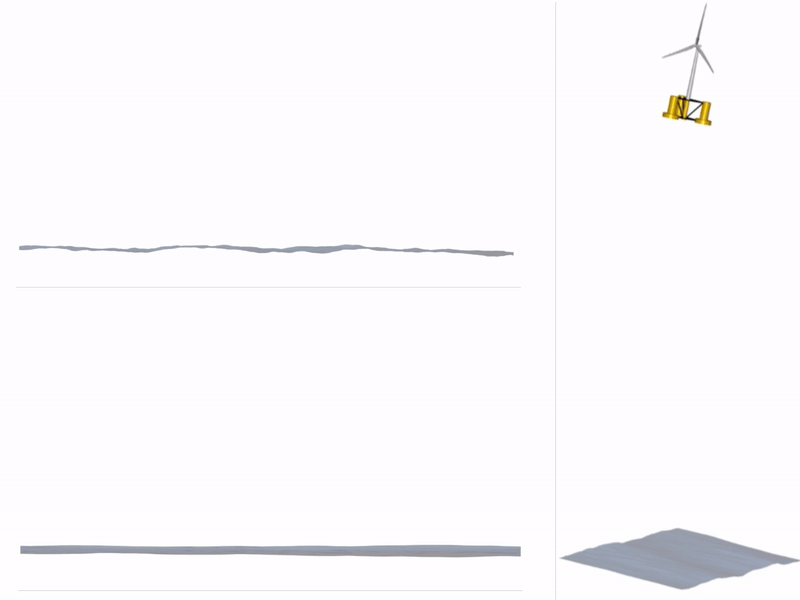Forum
Important Notice for New User Registrations
To combat an increasing number of spam and bot registrations, we now manually approve all new user registrations. While this may cause a delay until your account is approved, this step is essential to ensure the quality and security of this forum.
To help us verify your registration as legitimate, please use a clear name as user name or an official email address (such as a work, university, or similar address). If you’re concerned that we may not recognize your registration as non-spam, feel free to email us at with a request to approve your username.
Calculation of Cp with VAWTs when using LLFVW
Quote from sergeelasmar on 27. March 2025, 18:27Good evening,
I have limited experience in computational fluids so I may have misunderstood something. I am trying to model a H-type VAWT using the LLFVW method (at least I think that’s what I am using?). I was wondering how the Cp is calculated in this case as I could only find information about how it is calculated in the BEM case in the documentation.
Thank you for your answer,
Best regards,
Serge
Good evening,
I have limited experience in computational fluids so I may have misunderstood something. I am trying to model a H-type VAWT using the LLFVW method (at least I think that’s what I am using?). I was wondering how the Cp is calculated in this case as I could only find information about how it is calculated in the BEM case in the documentation.
Thank you for your answer,
Best regards,
Serge
Quote from David on 28. March 2025, 14:11Hi Serge,
the main difference between BEM and LLFVW is the way in which the wake induction is obtained. This is a critical aspect, with great effect on the produced power and thereby rotor Cp, as the induction is a measure for how much the freestream velocity is reduced within the rotor plane.
When using the LLFVW the induction in the rotor plane is obtained based on the induction caused by all combined free wake vortex elements.
In contrast, when using BEM, or the DMST method, the induction is evaluated based on the momentum blanace.
BR,
David
Hi Serge,
the main difference between BEM and LLFVW is the way in which the wake induction is obtained. This is a critical aspect, with great effect on the produced power and thereby rotor Cp, as the induction is a measure for how much the freestream velocity is reduced within the rotor plane.
When using the LLFVW the induction in the rotor plane is obtained based on the induction caused by all combined free wake vortex elements.
In contrast, when using BEM, or the DMST method, the induction is evaluated based on the momentum blanace.
BR,
David
Quote from sergeelasmar on 3. April 2025, 16:22Thanks for the clarification.
One thing I’m still unsure about: when simulating a VAWT using the SIL interface, is the simulation based on the DMST method, the LLFVW method, or a combination of both?
Thanks for the clarification.
One thing I’m still unsure about: when simulating a VAWT using the SIL interface, is the simulation based on the DMST method, the LLFVW method, or a combination of both?
Quote from David on 3. April 2025, 17:42Hi Serge,
For all time-domain simulations of VAWTs, only the LLFVW model is available.
This applies regardless of whether QBlade is run in SIL, CLI, or GUI mode.
BR,
David
Hi Serge,
For all time-domain simulations of VAWTs, only the LLFVW model is available.
This applies regardless of whether QBlade is run in SIL, CLI, or GUI mode.
BR,
David
Quote from sergeelasmar on 9. April 2025, 18:04Hello,
I am interested i checking how certain quantities such as Cp, Cl, Cd, Cm and AoA are calculated when running LLFVW simulations for a VAWT from the SIL interface. I found the source code on your website and upon some digging I could only fine the definitions of these quantities for the BEM and DMS methods. The latter of which seems to calculate the Cl and Cd using polar interpolation based on the AoA. Am I missing something? Is the calculation for the LLFVW method somehow related to the ones done in the DMS and/or BEM methods?
Thank you very much for your time and care,
Best Regards,
Serge
Hello,
I am interested i checking how certain quantities such as Cp, Cl, Cd, Cm and AoA are calculated when running LLFVW simulations for a VAWT from the SIL interface. I found the source code on your website and upon some digging I could only fine the definitions of these quantities for the BEM and DMS methods. The latter of which seems to calculate the Cl and Cd using polar interpolation based on the AoA. Am I missing something? Is the calculation for the LLFVW method somehow related to the ones done in the DMS and/or BEM methods?
Thank you very much for your time and care,
Best Regards,
Serge
Quote from David on 10. April 2025, 15:21Hi Serge,
during time domain simulation all aerodynamic results are calculated in the functions:
void QTurbineResults::calcHAWTResults()
void QTurbineResults::calcVAWTResults()
This is independent of the mode QBlade is running in (GUI, CLI or SIL). During the process, polars are interpolated based on the AoA and possibly the Reynolds number at a particular blade panel.
BR,
David
Hi Serge,
during time domain simulation all aerodynamic results are calculated in the functions:
void QTurbineResults::calcHAWTResults()
void QTurbineResults::calcVAWTResults()
This is independent of the mode QBlade is running in (GUI, CLI or SIL). During the process, polars are interpolated based on the AoA and possibly the Reynolds number at a particular blade panel.
BR,
David


